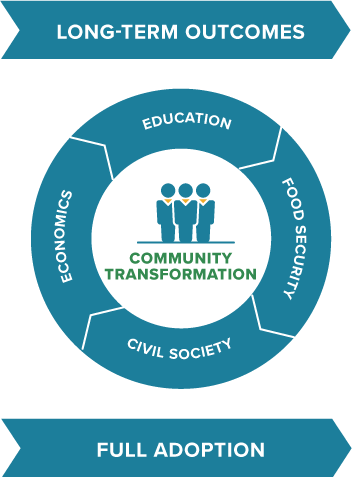School-based agricultural education (SBAE) is a 100-year-old, cost-effective system of delivering agricultural innovations, guided by an experiential learning model, in non-dormitory, post-primary schools. SBAE encompasses the theoretical foundations of four different bodies of knowledge – diffusion of innovations, experiential learning, positive youth development (PYD) and behavioral economics. Drawing from these disciplines, SBAE reaches youth where they live and learn to achieve two core objectives:
The SBAE system is built around the four components of the agricultural education model: classroom instruction, school demonstration farm, home entrepreneurship projects and leadership development. A graphic illustration (Figure 1) of the system shows the inputs and outputs necessary to achieve the short-term (youth) and long-term (community transformation) outcomes of SBAE. Owing to a collaboration of institutions, pedagogy and agricultural innovations are imparted to agriculture teachers through a series of trainings. Teachers diffuse these ideas to students, who practice them on school and home farms. Through the framework of an agricultural student organization, such as 4-H or Young Farmer Organizations, SBAE gives students the opportunity to build leadership, entrepreneurship and core life skills. As parents and other farmers in the community witness the confidence, increased agricultural production and income generated as youth employ their newly learned innovations, they begin to ask questions and slowly adopt the same innovations until a tipping point of diffusion occurs, leading to community transformation.
Innovations often elicit feelings of uncertainty within any social system (Rogers, 2003). This is especially true from the reference point of a smallholder farmer. An effective way to frame the efficacy of agricultural innovations is to shift a farmer’s reference point, or perspective, through empowering youth as early adopters and change agents. Young people are the ideal entry point into a rural community because they are more easily influenced than adults, especially within a school setting. This is not the standard school garden program often seen across the African continent. It is a twenty first century behavioral economics approach to an early twentieth century experiential learning model.
By identifying youth as early adopters of agricultural innovations and empowering them to be change agents for the diffusion of those innovations, SBAE becomes an economic incubator for the entire rural community – amplifying existing agriculture and education initiatives.
The following links examine each of the five elements of the system – institutions, agriculture teacher training, agricultural education model, youth outcomes and community transformation – individually and in detail.
Mail Us
info@sbae.org
The foundation of the framework connects existing agricultural and educational institutions into a replicable SBAE system. These collaborating institutions can be public, private, formal and informal.
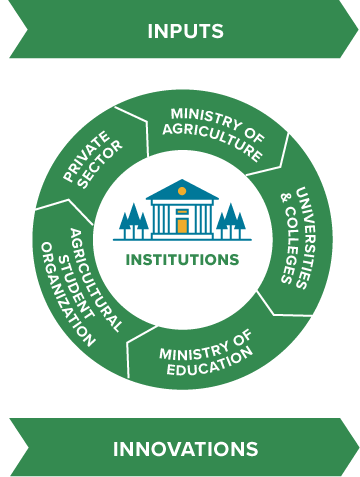
To diffuse innovations, teachers are equipped as change agents through a continuum of three agriculture teacher trainings coupled with continuous accountability and follow up.
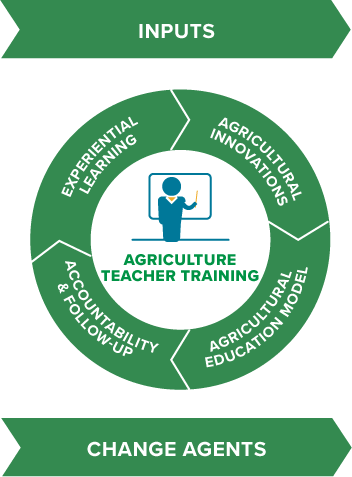
Experiential learning that connects classroom content, school-based agricultural experiences, home projects and personal leadership skills frame the four-component agricultural education model.
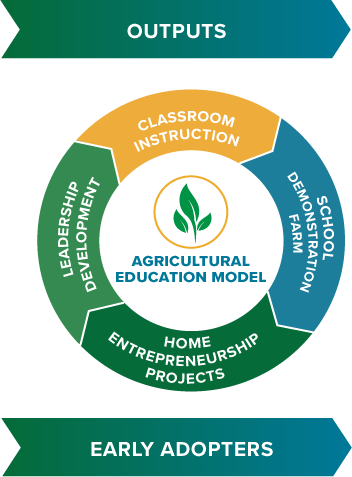
As adults witness youth outcomes, they also begin adopting agricultural innovations, creating a tipping point of adoption within the community.
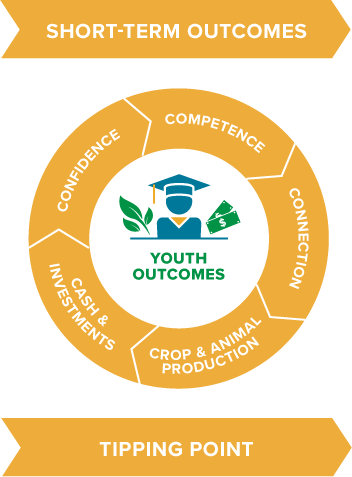
As improved innovation moves to full adoption, youth contribute to the transformation of the local community at four different levels.
